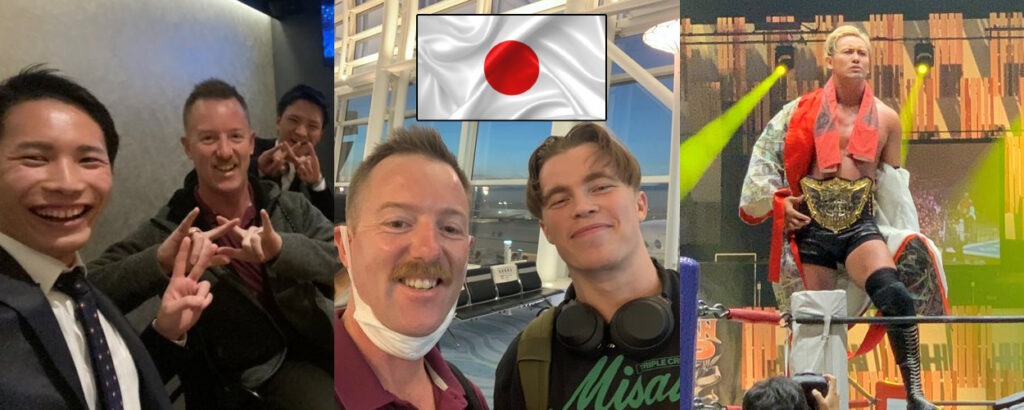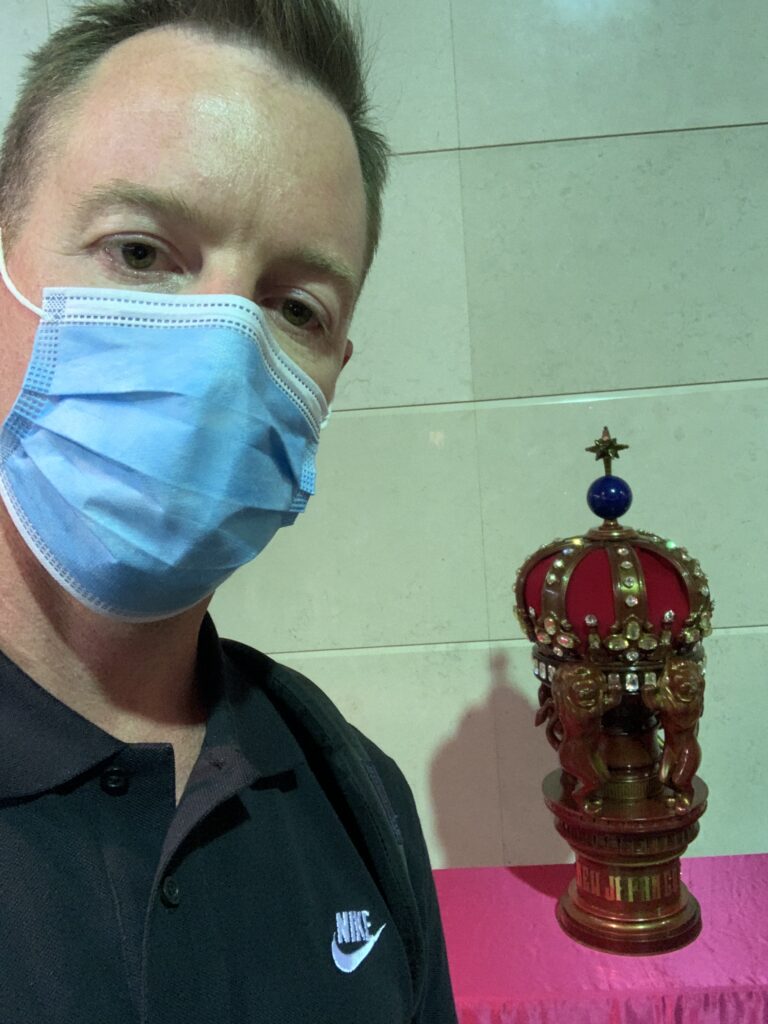A Wrestling Fan’s Guide To Japan – Part 1

By: Nathan Baldwin
As an artform, professional wrestling creates a primarily visual product. It exploits the much more carnal side of the human psyche, and in doing so, transcends cultural trends and current affairs. It tells a story older than humanity itself: competition to determine who is the alpha.
Televised pro wrestling almost always features live commentary, but two things exemplify that pro wrestling doesn’t even need verbal language to tell a story: the popularity of live shows, and the fact that Japanese wrestling has had a strong fan base in English speaking countries for decades.
My first exposure to Japanese pro wrestling was back in the days of dial-up internet. Streaming technology didn’t exist. In 2002, after reading a review on a message board, I bought a six-tape set of bootleg Japanese wrestling from now defunct goldenboytapes.com. Twenty hours of puroresu, showcasing the best matches and most important moments of the previous year. Mutoh, Kawada, Liger, Misawa et al graced my old analogue TV in grainy, distorted VHS splendour. I had to admit to myself, at the end of the twentieth hour as Vader pinned Jun Akiyama to win the GHC Tag Team Championships with partner Scorpio, puroresu was superior my beloved WWF. But it was so difficult to access. The text was all in Japanese, I didn’t know the wrestler’s names, I couldn’t understand the commentators, and the quality of the bootleg tapes just didn’t compare to my 720p satellite feed of WWF Raw on Austar. I was confident I’d discovered the best pro wrestling in the world, but the limitations of early 2000s technology meant it was almost inaccessible.
Fast forward 12 years. With broadband internet, it no longer took hundreds of dollars and a lot of patience to follow the Japanese pro wrestling scene. I got my hands on NJPW’s Wrestling Dontaku 2013 and saw Kazuchika Okada defend the IWGP Heavyweight Championship against Minoru Suzuki. This time I was hooked.
In 2015 NJPW launched NJPW World, live streaming all New Japan shows and soon after, an English commentary team was regularly featured. The major Japanese wrestling promotions have followed suit and now it’s very easy to follow the Japanese pro wrestling scene from abroad.
In March this year I had the opportunity to tick a major item off my bucket list and travelled to Japan to see New Japan Pro Wrestling live. I followed the final seven shows of the New Japan Cup, through to the finals where I saw Sanada break his stereotype as the interminable runner up and win the tournament in his hometown. I saw David Finlay stake his claim as a future main eventer and new leader of the Bullet Club, and Aussie Open’s Kyle Fletcher and Mark Davis leave their stamp on New Japan as formidable singles competitors. By the time I was boarding my flight back to Australia it felt my life had become interwoven with NJPW history. I’m now looking forward to returning in April 2024 for Sakura Genesis.
But is Japan as friendly to a puroresu fan as the internet has made NJPW? What did I learn, and what advice would I give to fellow Japanese wrestling fans travelling to Japan for the first time?
While my holiday was planned around the New Japan Cup, I wanted to know what else was happening in puroresu while I was in Japan. I found en.puwota.com, which has an exhaustive calendar that lists every puroresu show happening in Japan on a given day. And when I say exhaustive, I mean exhaustive. With en.puwota.com as a resource, I found myself in a community centre in the middle of nowhere, at 12:00pm on a Saturday, watching an amateur performance with Power Rangeresque costumes and anime come to life, with about 40 Japanese locals. It was worth it for the selfie with CyberKong. En.puwota.com links to the venue through Google Maps and links to ticket retailers, although many of the retailers seem to be for Japanese residents only.
A pro wrestling fan could just stay in Tokyo for their whole holiday and let the big Japanese promotions come to them. In the first half of April 2023, Big Japan, DDT, New Japan, Stardom, Dragon Gate, All Japan, GLEAT and others all ran shows in Tokyo. In fact, in the first half of April you could see 10 shows just at Korakuen Hall by Stardom, NJPW, Dragon Gate, All Japan, DDT, GLEAT, Big Japan and Tokyo Woman’s.
While my holiday was puroresucentric I still wanted to see more of Japan than just Tokyo so I opted to follow the New Japan Cup. With dates, cities and shows all written down, it was time to buy my tickets, book accommodation and figure out how the heck to get around the country!
Firstly, I learned that it’s quite difficult to buy tickets to a New Japan show from outside of Japan. Some promotions make it easier than others, but for New Japan I opted to use a ticket buying service.
You can read this article that I found, which helped me make my decision to purchase tickets with buysumotickets.com
Buying NJPW Tickets from Abroad: A Complete Guide – Japan Concert Tickets
As tourism returns to Japan you might find that there are more Western fans returning to New Japan shows, but I found that for all but the Korakuen Hall show in Tokyo, and the finals in Nagaoka, I was the only tourist in the building! One unanticipated advantage of using a ticket buying service is that if other foreign fans use the same service for their tickets to the show you’ll probably end up sitting next to them. The ticket buyer will usually buy all pre-ordered tickets at once. I met a couple on holidays from Melbourne at the Korakuen Hall show, and at the finals I was seated next to another solo traveller, from Wisconsin. The opportunity to enjoy the show with other tourists was a welcome surprise.
Part two will be posted mid next week..









Great article. I loved the first person account of a Wrestling Fan.